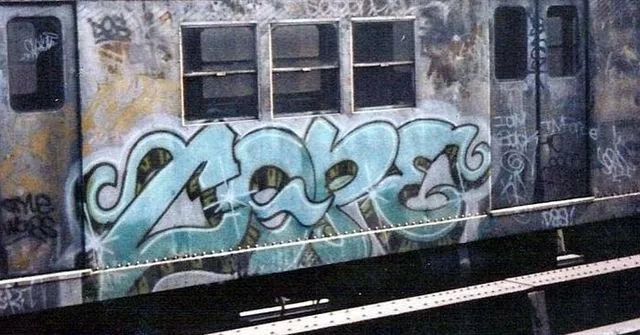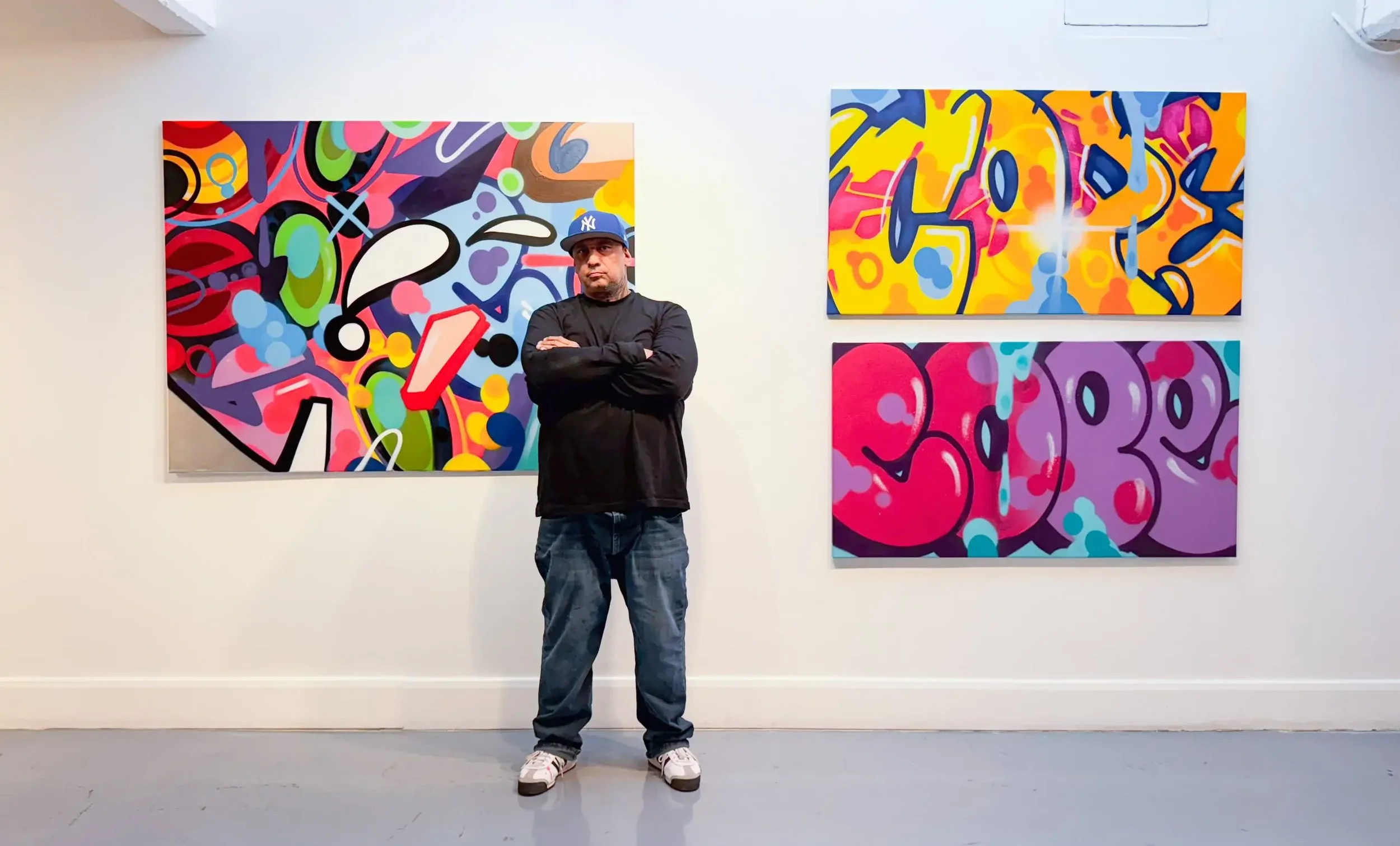The Rise and Fall of Cope2: Graffiti Legend or Snitch?
Few names in graffiti carry as much weight, or as much controversy, as Cope2. From the Bronx train lines of the 1970s to collaborations with global brands, Cope2 carved his name into graffiti history. But while his rise to fame is legendary, his fall from grace within the graffiti community is a story filled with drama, betrayal, and allegations that changed his reputation forever. In this post, we break down the full story of Cope2’s history, his impact on graffiti, and the controversies that reshaped how the graffiti world sees him today.
From the Bronx: Cope2’s Early Graffiti Beginnings
Born Fernando Carlo Jr. in 1968, Cope2 grew up in the South Bronx, an area defined by burned-down buildings and abandoned lots. It was here, surrounded by decay and creativity, that Cope2 would find inspiration when he saw his cousin Chico begin tagging around 1977. Like many graffiti pioneers, Cope2 was inspired by early NYC legends like Blade, Comet, and IZ The Wiz, who dominated subway cars during graffiti’s golden era.
As he developed his craft, Cope2 founded his own crew, KD (Kids Destroy), later renamed Kings Destroy, cementing his reputation as a Bronx graffiti powerhouse. Known for his bold, legible throwies and consistent bombing, Cope earned the title “King of the 4 Line.” His name became synonymous with persistence and visibility, two key elements in graffiti culture.
From the Subway to the Gallery: Cope2’s Rise to Fame
When trains began being phased out, Cope2 shifted from subway cars to walls and canvases. This transition was crucial. Encouraged by his friend Pulse, Cope entered the gallery world, and by 2000, he was selling paintings at art shows and auctions. This move made him one of the first graffiti writers to successfully bridge the gap between graffiti art and fine art, a transition few managed to navigate as profitably.
Over the years, Cope2’s reputation expanded beyond graffiti walls. He collaborated with Adidas, Converse, Foot Locker, and Time Magazine, and even had his work featured in video games like Marc Ecko’s Getting Up and Grand Theft Auto IV. His throw-ups even appeared in Shrek 2. At one point, Cope2 was one of the few graffiti artists who could call himself a household name, representing the Bronx graffiti legacy to a global audience.
Cope2’s Biggest Collaborations and Global Reach
Despite growing controversy within the graffiti community, Cope2’s visibility only increased. He was painting massive ads for Time Magazine in SoHo, collaborating with major brands, and appearing in documentaries and interviews that framed him as one of graffiti’s biggest success stories.
His art became a symbol of graffiti, and for a time, he was respected by fans and collectors alike. The irony was that the same culture that made Cope2 famous, the graffiti community, was starting to distance itself from him.
The Utah and Ether Incident: Allegations and Fallout
Around the late 2000s, Cope2’s career took another sharp turn, this time toward full-blown scandal. He became entangled in controversy with well-known graffiti duo Utah and Ether after a failed painting mission led to a police raid.
Cope had backed out of a planned graffiti session last minute. While Utah and Ether were painting, police raided the yard. According to court documents and emails later published online, in the aftermath, metadata from photos and emails surfaced, suggesting someone had shared incriminating information with law enforcement.
Many in the graffiti world accused Cope2 of snitching, pointing to evidence that linked his personal files to those in the DA’s records. Though Cope never admitted guilt, and direct proof remains elusive, the incident all but destroyed his credibility among writers.
Legacy of a Graffiti Legend
Despite the controversies, Cope2’s impact on graffiti culture is undeniable. His throw-up style remains one of the most recognizable in the world, and his influence stretches across generations of graffiti artists. Love him or hate him, Cope2 helped shape the bridge between graffiti’s underground roots and mainstream art culture.
His story is a complex one, a reminder that fame in graffiti often comes with consequences. From Bronx train yards to global art galleries, Cope2’s journey represents both the rise of graffiti as a respected art form and the internal conflicts that still define it today.
If you're unsure where to start or how to avoid common mistakes, check out our graffiti fundamentals book available online; it’s packed with real lessons and photos to guide your development as an artist.
Grab a digital copy here: Ultimate Graffiti Guide Book Part 1: Fundamentals





